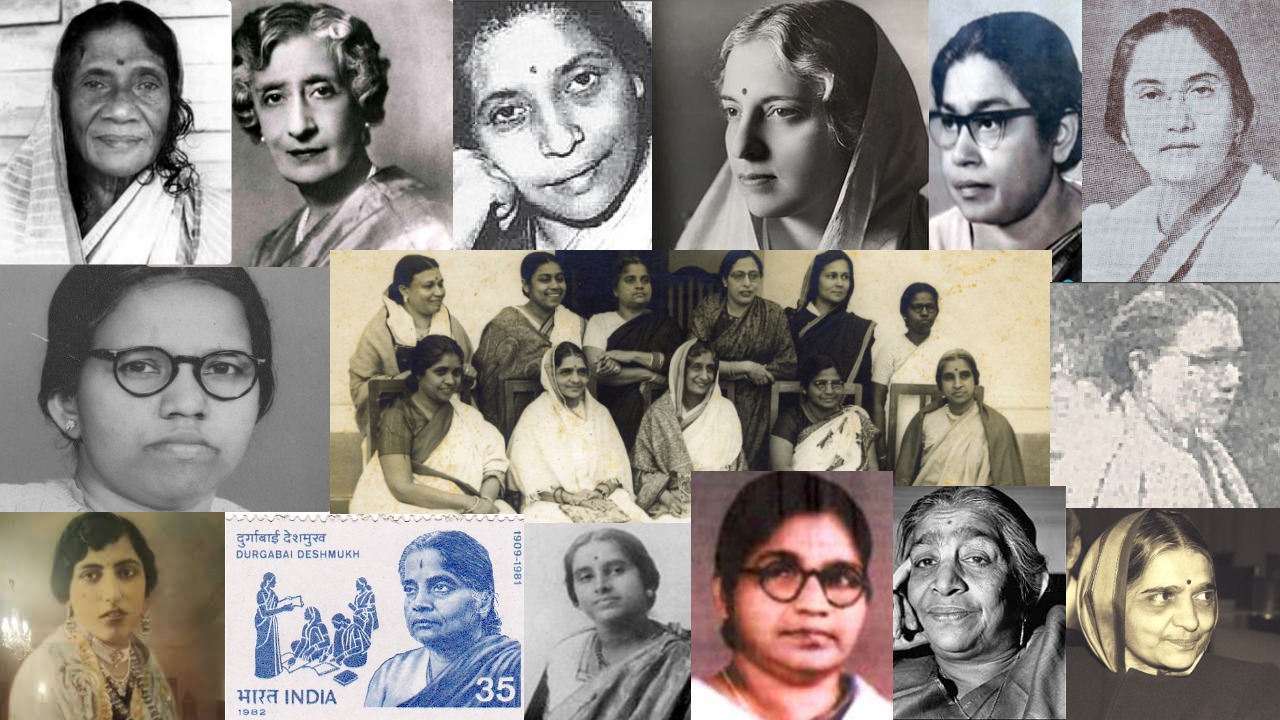Samvidhana Mattu Mahile, translated into English as “Constitution and Women”, is a book by HS Anupama that talks about women in context of the Constitution and their constitutional rights. In a caste divided society, the woman is doubly oppressed. Once because of her gender and once because of her caste. The Constitution of India erased these shortcomings in the society and gave women their rights.
The following is an excerpt from the book that talks about the role of women who were a part of the Constituent Assembly and played a role in the drafting of the Constitution of India.

Women in the Constituent Assembly
We are told the stories of the lives, achievements, presence and speeches of the male freedom fighters. Men involved in the making of the constitution and male politicians. This is done as though women were completely absent in all of these roles. As if there were no women in the Drafting Committee of the Constitution, which was headed by Babasaheb Ambedkar. There were fifteen female members in the Constituent Assembly and all of them had been freedom fighters. These women were a part of the presidential panel and various other sub-committees. Some of these women were lawyers and also came from diverse family, caste, religious and linguistic backgrounds. They also were, in one way or another, victims of the patriarchal violence of child marriage, widowhood, domestic violence, torture, denial of equal property rights and caste based violence.
On identifying themselves with diverse ideologies of Gandhism, socialism and feminism, they were on the ground, working with and for people. They attended every meeting of the Constituent Assembly and contributed by actively participating in all the debates and discussions that preceded the acceptance of the Constitution. The following were those fifteen women and the regions that they belonged to.
-
Ammu Swaminathan, Madaras.
-
Annie Mascarene, Travancore, Cochin Union.
-
Begum Aizaz Rasul, United Provinces.
-
Dakshayani Velayudhan, Madras.
-
Durgabai Deshmukh, Madras.
-
Hansa Mehta, Mumbai.
-
Kamla Chaudhary, United Provinces.
-
Leela Roy, Bengal.
-
Malati Choudhury, Odisha.
-
Purnima Banerjee, United Provinces.
-
Rajkumari Amrit Kaur, United Provinces.
-
Renuka Ray, West Bengal.
-
Sarojini Naidu, Bihar.
-
Sucheta Kriplani, United Provinces.
-
Vijalakshami Pandit, United Provinces.
[…]
The truth is that these women were more informed about the then present realities of India. They were clear about the kind of future that the country needed. Vijaylakshmi Pandit and Hansa Mehta thought not only about the domestic issues but were concerned and informed about international affairs. All these women, who were involved in the framing of the Constitution, informed the process with their priceless insights and suggestions. They not only talked about women’s rights, but went beyond the boundaries of class, caste and religion, and spoke about the rights of the marginalised.
One can observe certain developments here.
Most of the women present in the constituent assembly (including the women from the minority communities) were for equal citizenship. These women, along with Dr Ambedkar, Minoo Masani, Nehru and many others, wished for the erasure of the different caste-class-religion based identities in the country and be replaced by an Indian identity. They believed that this is the only way to keep the country united. They believed that it was only the Indian identity that could free women from the oppressive clutches of religion. The intellectuals of the time thought the same. It is changed now.
Now, the idea of uniform citizenship has come to be known as the hegemony of the religious majority and their control over the religious minority. This explains the hyper visibility of religion in politics in the last half a century. This also explains the transformation in the idea of nationalism of the religious majority in the country.
Ambedkar struggled to get the Hindu Code Bill passed before the Constituent Assembly. He believed that the Hindu Code Bill would bring about a great change in the lives of Indian women. Most of the women in the assembly were in agreement with many parts of the bill, as they were in one way or the other oppressed by the patriarchal Indian society. They propagated women’s rights and independence of women. However, the Hindu Code Bill was not passed then, and it couldn’t have been, as many members, including women, in the Constituent Assembly wouldn’t assent to the bill. The discussions about the bill were carried out outside the Constituent Assembly. We do not know if women participated in these discussions. No information about the participation of women and their responses to the bill is available and this demands an in-depth research.
Read more:
A Radical Biography in Nine Acts
The Everyday Life of Law in the Indian Republic




